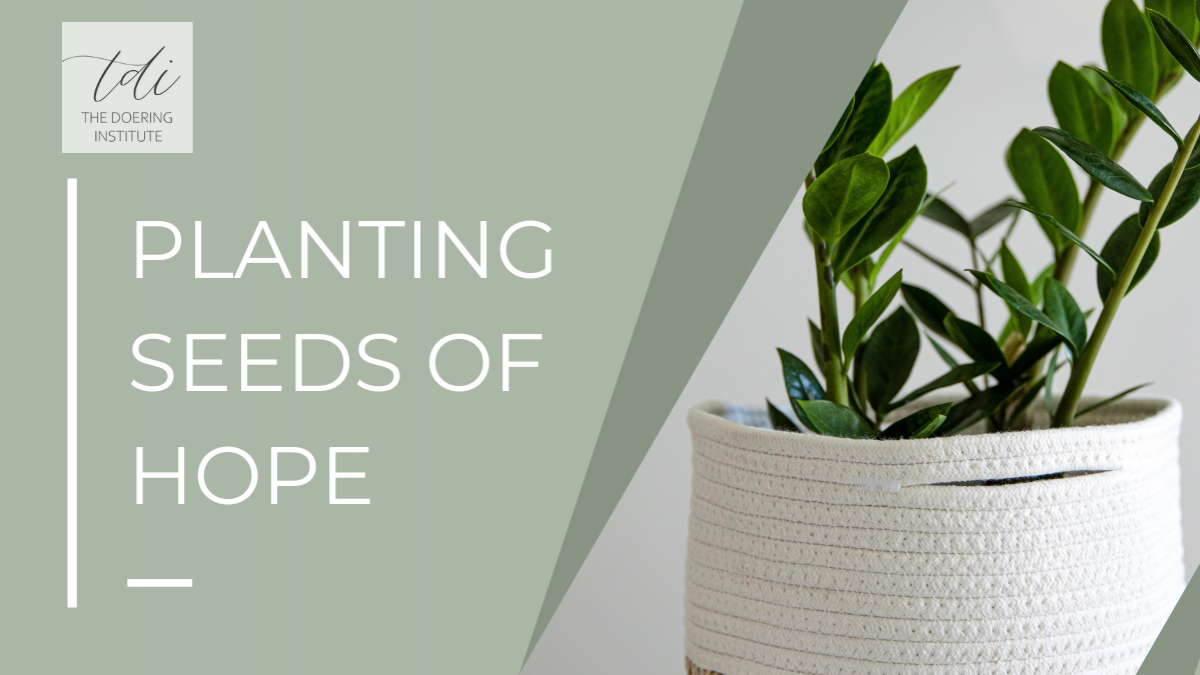Planting Seeds of Hope

Learn how your physical classroom space may be impacting your students' ability to learn.
Your words and actions will struggle to make an impact if the physical environment you're creating doesn't match. That's why our January Association of Trauma-Informed Educators topic is trauma-informed spaces. And we wanted to dive deeper into why having plants in your classroom is a positive step toward a trauma-informed classroom culture!
There are physical health benefits to having plants around, including air quality and decreasing the chance of getting sick. And taking care of the plants can also increase mental wellness, improve mood, decrease anxiety, and relieve stress.
Additionally, studies have found that caring for plants can improve student self-esteem. As they are able to see something else grow and change, they can see themselves as having the potential to change. As they take care of the plants, they unlock their inner nurturer and learn that they are capable of caring for something outside of themselves.
There's even research that shows that artificial plants that look real can have some of the same psychological benefits as real plants, so sprinkling a few of those around the room may be helpful, too! Plus, plants are aesthetically pleasing and enjoyable to look at, which benefits mood and a sense of community and belonging--if you like the space your community meets in, you may start to enjoy the community, too!
So how does this look practically?
- First, consider the age and maturity of your students. Are they ready and able to take on the responsibility of watering and caring for plants, or will they need more guidance from you (e.g. reminder that it is their turn to water)?
- Get the class involved by asking them to choose plants for the room or allowing them to pick out pots! You could even create a wishlist online (if your school allows) and send it out to parents to see if they will cover the costs of the plants!
- Remember that what students do not already know, they will need to be explicitly taught. This means that you will need to show them how to care for the plants. Talk out loud about how you think through a safe place to put the plants so that they aren't knocked over. Talk about the selection of the pots and why you chose them. Be specific with students about why you are engaging in this activity.
- Include your content in this project!
- Mathematics: Many plants have symmetries that are linked to the golden ratio and other fun geometric shapes! Have students do a project where they learn about one or more of these symmetries.
- English: Have students write or read poems that are about nature!
- Social Studies: Engage students in learning about cultures that are heavily invested in nature, horticulture, or agriculture.
- Science: Teach students about the life cycles of plants and have them experiment using your plants!
- Art: Have students creatively express themselves by asking them to take on the perspective of the plant in your classroom. What does the plant see, feel, think?
- Foreign Language: Have students learn plant-related words in other languages!
Your students will benefit from having the plants around, and so will you! These positive benefits will begin to transform your own mindset as you enjoy being in your space, have increased wellness benefits, and find meaning in helping your students and changing the world!
You will love our trauma-informed spaces guide, where we share with you some ideas for creating trauma-informed spaces! Get a free copy of our shopping guide here, and listen to the training on trauma-informed spaces as a premium member of the Association of Trauma-Informed Educators.
Categories: : Classroom, Education, Physical Space, School, Teacher
 Jessica Doering
Jessica Doering 